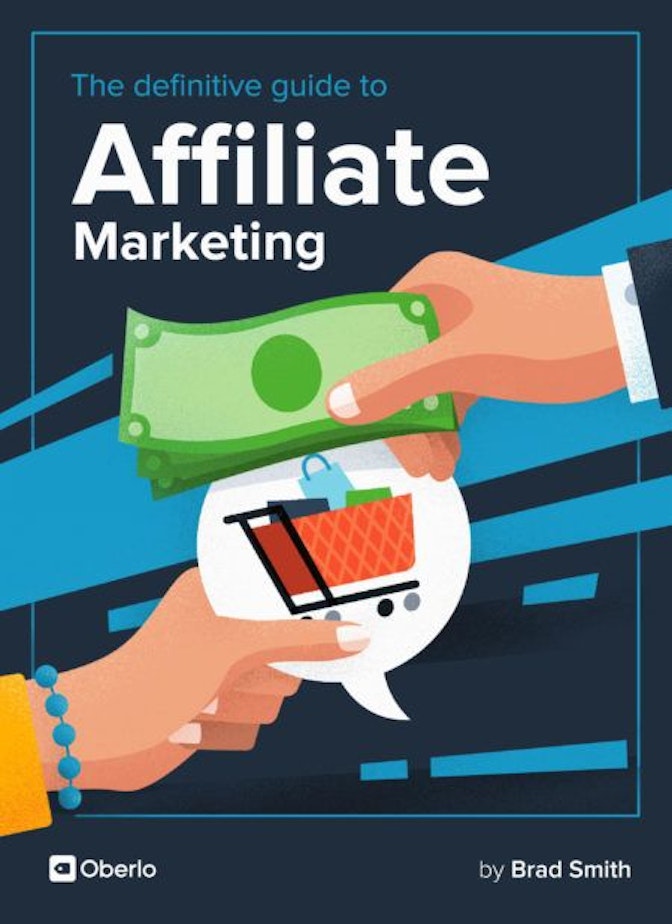Now that you have a good idea of what it is, the next step is to find out how to make money with affiliate marketing.
While we’ve already looked at some examples of businesses that have successfully done this, we haven’t gone into much detail about how you actually get paid. This chapter will dive deep into the mechanics of how you sell, track, and get paid for the work you’ll be doing.
This will help you understand more about what you’re getting into, and provide some insight into how to make money with affiliate marketing for beginners. Knowing how payments work will even help you decide how quickly you step into the world of affiliate marketing.



2.1 How Affiliate Commission Works
As we’ve seen, affiliate marketers generally make money when they sell or help prompt the sale of a product, service, or other online good. This is also the general idea people think of when they hear the word ‘commission’. Sales have to be involved, right?
But that’s only one element of how affiliate marketers can get paid.
→ Click Here to Launch Your Online Business with Shopify
For the sake of simplicity, you can break down affiliate commission into three separate categories that work together to ensure you get paid:
- Payment plans
- Proven wins
- Payment systems
We’ll talk about each, and show you how they work in your favor as an affiliate.
The first element that you’ll need to nail down when looking into how to make money with affiliate marketing is how often you get paid, or the payment plan.
Generally speaking, there are at least three considerations when establishing a payment plan with a merchant.
| Payment Plan Element | How it Works |
| Set dates | Weekly, monthly, or quarterly payments. Often merchant-oriented to ensure adequate payments are made. |
| Minimum payment | Once you earn a minimum amount, payment is triggered. If you don’t hit this amount in a set time, payment delays until the next date when the minimum is met. |
| Sliding vs. normal commission | Determines if your payment is set, or can change with your performance. |
When you establish each of these elements, you’ll have a better idea of how you need to perform to gain a consistent income.
For example, if your minimum amount is $100 and you get paid the first of each month, you’ll know how effective your efforts need to be to receive timely payments.
This also helps you plan your finances, and determine if the initial effort will be worth it.
Once you know what your payment plan is, the next step is to determine which proven win you’ll get paid for.
While most people think about sales as the only affiliate marketing action that’s available to you, your actual mission is really to provide a proven win for the merchant. That means you can make money with affiliate marketing in a wider variety of ways than just selling.
A proven win is a much broader concept than merely closing a sale. That works in your favor, as it creates more opportunity for you to make money as an affiliate under the right circumstances.
When a business tries to win a customer, they typically use a model called the sales funnel to help them create a systematic approach toward selling. Here’s a typical example of what this can look like:
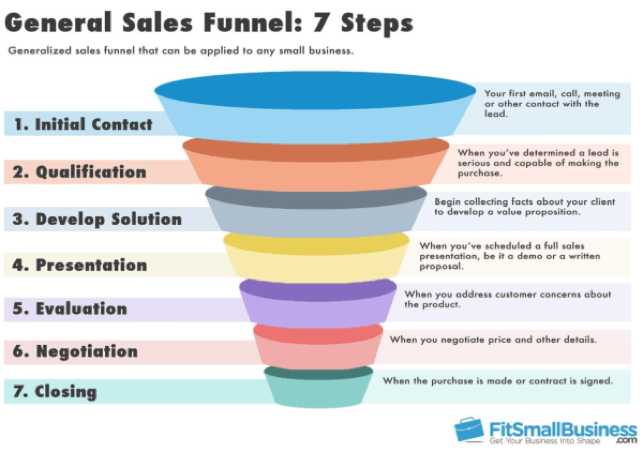
Within this sales funnel, there are seven stages that require a ‘win’ that the business has to achieve for a customer to make a purchase.
[highlight]To make money with affiliate marketing, your job is to provide one of these wins to a business for an agreed upon price. Your affiliate commission is based on how well you perform this task. [/highlight]
Since there is such a broad spectrum of set wins, you have plenty of options when determining your approach as a marketer.
For example, making that initial contact with a potential customer can sometimes be difficult for a business. If you can leverage your audience or a paid ad to help initiate a conversation between a business and a future buyer, then you can be paid for that.
In fact, there are a wide variety of wins that you can achieve in order to get paid. Here are three quick examples:
| Proven Win | Description | Example |
| Form Submitted | You get paid when there are a certain amount of views of your ad, blog post, video, or social post. | You get paid per 5,000 views on a YouTube video. A video with 50,000 views = 10 payments. |
| Click, or X number of clicks. | You get paid whenever a visitor clicks on your ad, blog post, or a specific link in your blog post. | In your blog post, you include a link that nets $0.50 per click. If 200 users click, you earn $100. |
| Action, or X number of actions. | You get paid whenever a user takes a specific action, such as subscribing to a newsletter, making a phone call, or purchasing a product. | You run an ad promoting your merchant’s product. Whenever someone purchases via your ad, you get 10% of the profit. |
| Demo Scheduled | For larger products and services, many brands prefer you set up a call with their sales team. Your goal is to schedule appointments, not necessarily sell. | You post a blog article about enterprise web hosting. Someone schedules through a link you provide, and you earn a commission. |
| Purchase Complete | In longer sales cycles, it may take more time for a purchase to be completed after you bring your customer to the merchant. This rewards generously for prospects you provide that actually buy. | A referral from your efforts negotiates with the merchant. After 3 months in their sales funnel, they close a deal and you are compensated a set percentage. |
To make money with affiliate marketing, you will need to track and report each of these wins. As each is unique, you’ll have to employ a variety of tracking tools to bring in revenue.
To give you a better idea of what that looks like, an easy way to track clicks or impressions is to create an online ad using Google Ads.
When you create, fund, and publish an ad, your dashboard gives you a day-by-day breakdown of impressions, clicks, and how much you’ve spent to win those clicks.
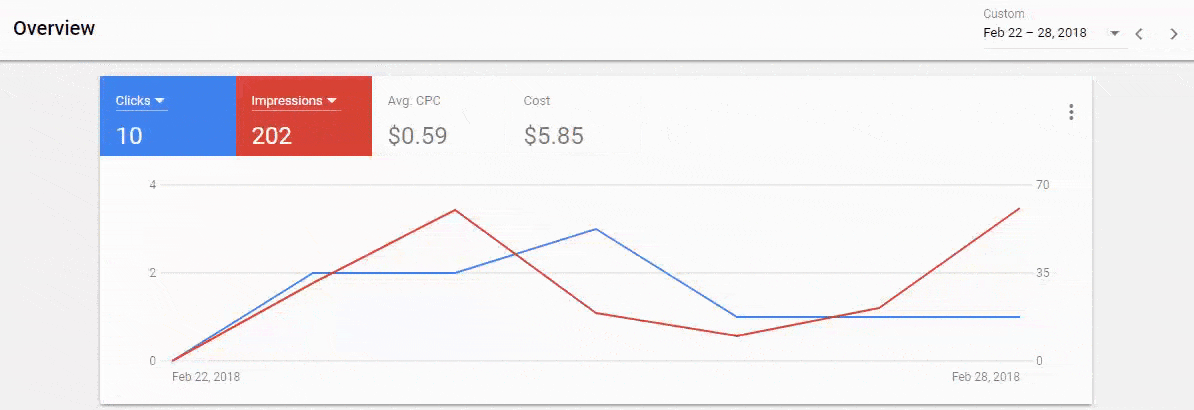
This is the information that you’ll track and report to your merchant in order to receive compensation for your efforts.
Or if you’re trying to track traffic to your site, an easy way to do so is to utilize the free tracking available on Google Analytics. Under the Behavior Overview, you can see a quick readout of how many unique page views you get per day, as well as plenty of other helpful information you’ll be able to track and report.
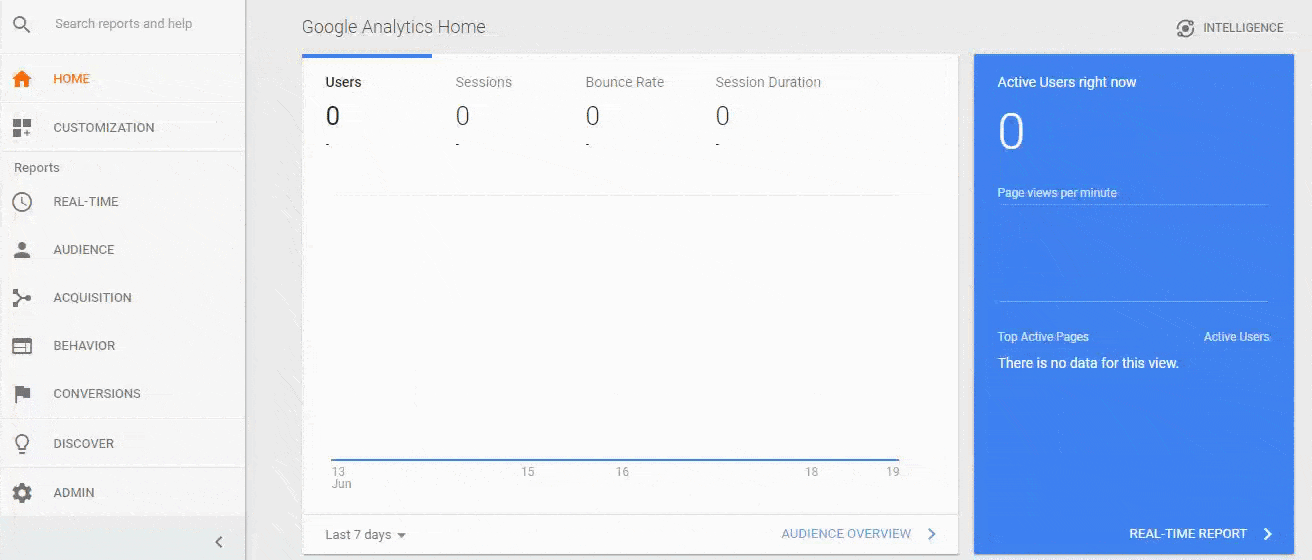
You’ll need to ensure that you’re able to accurately track whatever metric allows you to effectively make money with affiliate marketing.
And in many situations, you won’t have to track much of anything at all. For example, many affiliate marketers are issued ‘specialized’ links that act as a flag for the merchant to track. One marketer shared this example that he used as an Amazon affiliate:
http://amazon.com/exec/obidos/ASIN/0124211607/wilsoninternetse
The final, bolded element is his associate ID, which signals to the merchant which affiliate brought the traffic and needs to be paid for the click or subsequent purchase.
In general, you’ll see more opportunities as an affiliate marketer under the ‘Actions’ category of proven wins. Since most trustworthy ad platforms don’t charge for impressions, brands have moved away from paying affiliates to win those. The only exception would be brand-oriented blog posts or videos, but even those are uncommon.
But once you’ve determined what ‘win’ you’re going for, it’s time to knuckle down and talk finalizing your affiliate commission.
The next step of learning how to make money with affiliate marketing for beginners requires you ro learn a bit more about how those commissions work.
In short, you get paid via an agreed upon payment system.
When it comes time to get paid, you’ll need to negotiate with your merchant to determine what works best for the both of you. Depending on your responsibilities and your merchant’s flexibility, there are a variety of different payment systems that affiliate marketers use.
#1: Pay-Per-Sale
This payment program means that every time you complete a sale, you get paid. Depending on your arrangement, payment can be immediate, or on set days of the week, month, or quarter.
This system is as simple as commission could be and is much like the traditional sales approach in that way. It’s by far the most common type of affiliate payment system, and is usually the primary way affiliate marketing is represented.
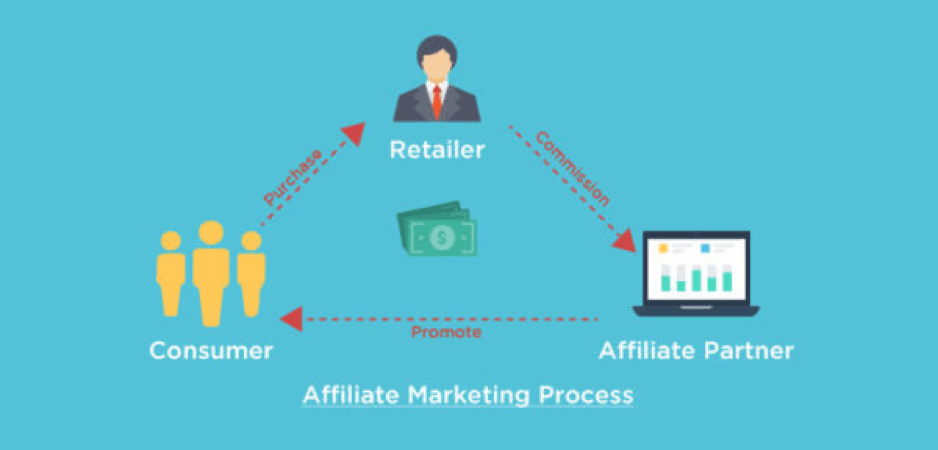
Some companies even offer more complex sliding commissions, which means you get paid more for higher sales amounts.
Under the right circumstances, it’s beneficial to all parties and can provide excellent opportunities to make money with affiliate marketing.
#2: Pay-Per-Lead
Leads are potential customers that your merchant can follow up with, and can be of immense lifetime value to the right brand. Pay-per-lead systems are similar to pay-per-sale, except the ‘proven win’ is that you produce a qualified lead.
This is done through a process similar to pay-per-sale marketing, as it relies on audience analysis and delivering ads or content that are engaging.

Usually, a qualified lead needs to hit a certain profile though, so sending any old lead won’t do. You’ll need to ensure that your prospect hits all the right checkmarks before you send them on.
In order to win leads, you’ll need to take a softer approach than if you were operating under a pay-per-sale payment system. Lead generation is more about gathering information that your merchant partner can use to make a sale at a later time. That means using different tactics, such as:
- Email opt-ins or newsletters.
- Forms on your website or landing pages.
- Phone call scheduling.
Pay-per-lead programs are usually run by companies with bigger budgets. For example, this list of pay-per-lead programs shows off multiple affiliate programs that offer more than $100 per lead. Most of the businesses require large investments of their customers though, so you know they can afford it.
This type of payment system is mostly used by companies that have a more offline-oriented sales approach, like car dealers or real estate agents. They can’t make a sale online, but still need leads.
In essence, this payment allow you to make money with affiliate marketing by bridging the gap between the customer and the merchant. If you want to do less hard selling, this is a good system to choose.
#3: Pay-Per-Click
Pay-per-click is the third most common type of payment system, and it simply means that you get paid when your merchant’s banner ad or link is clicked on your site. Since you get paid regardless of whether the customer makes a purchase, this has good potential.
Unfortunately, as previously mentioned, it’s hard to find pay-per-click much anymore due to some fraudulent behaviors in the past. Plus, online ads tend to provide a much better return on the merchant’s investment.
#4: Customer Acquisition
This type of payment system is also known as a bounty program. The gist of it is that if you send a customer to a site and they make a purchase, you get paid.
While that sounds like pay-per-sale, it’s different in one crucial way: scale.
Bounty programs are typically used by larger businesses that bring in much more money per sale. They also tend to keep their accounts for a more extended period, which means the sale you bring in is worth more.
And it’s also usually a much longer sales cycle. Here’s a good breakdown of where this process falls in the overall sales cycle:
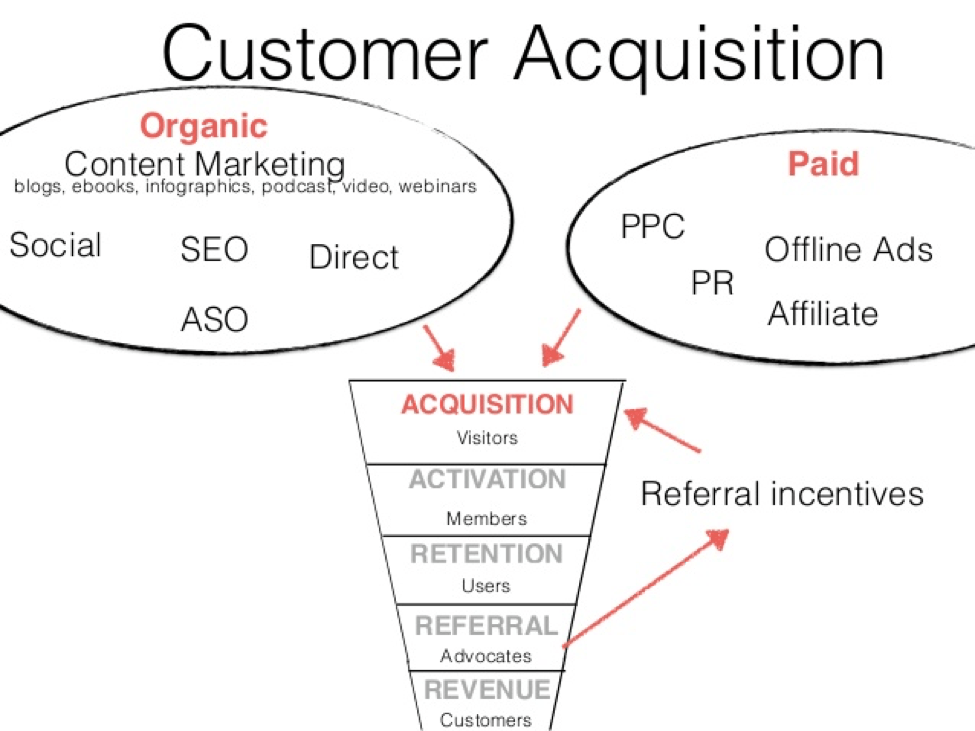
For example, a larger wholesaling website could pay an affiliate fee to a smaller client that refers another business. You can almost think of it like a ‘finder’s fee’. Instead of making a hard sale, you only have to start the relationship between your merchant and the customer.
If you’re looking for a way to make money with affiliate marketing that has high payouts, this option is a good place to start.
#5: Residual Earnings
The residual earnings payment system is much like the customer acquisition program, but the initial payment is usually smaller. Instead, whenever the referred customer makes another purchase in the future, a percentage of that goes to the affiliate.
This means your pay gets spread out over time and can be a useful method for affiliates promoting a subscription-based service. Amazon is particularly famous for taking this type of approach for their services like Amazon Music or Prime Video.
And if these subscriptions lead to more purchases, there’s usually a little kickback to the affiliate marketer that goes with it.
While residual earnings usually diminish over time, they can still add up to a significant amount and are a great option for affiliates to make consistent income.
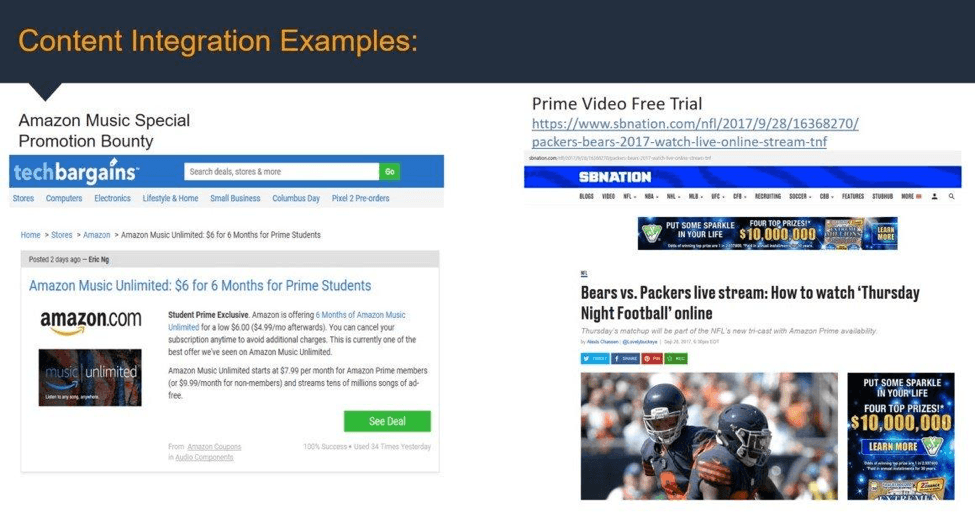
#6: Multi-Tier Programs
In a multi-tiered program, the first tier is the same as any other payment system. You’ll get paid according to your agreed upon goal.
The big difference is that you can also recruit more affiliates. When you do so, you’ll take a percentage of their profits, and therefore earn commission by doing virtually nothing. Theoretically, there’s an infinite number of tiers that can get added.
Sort of like this:
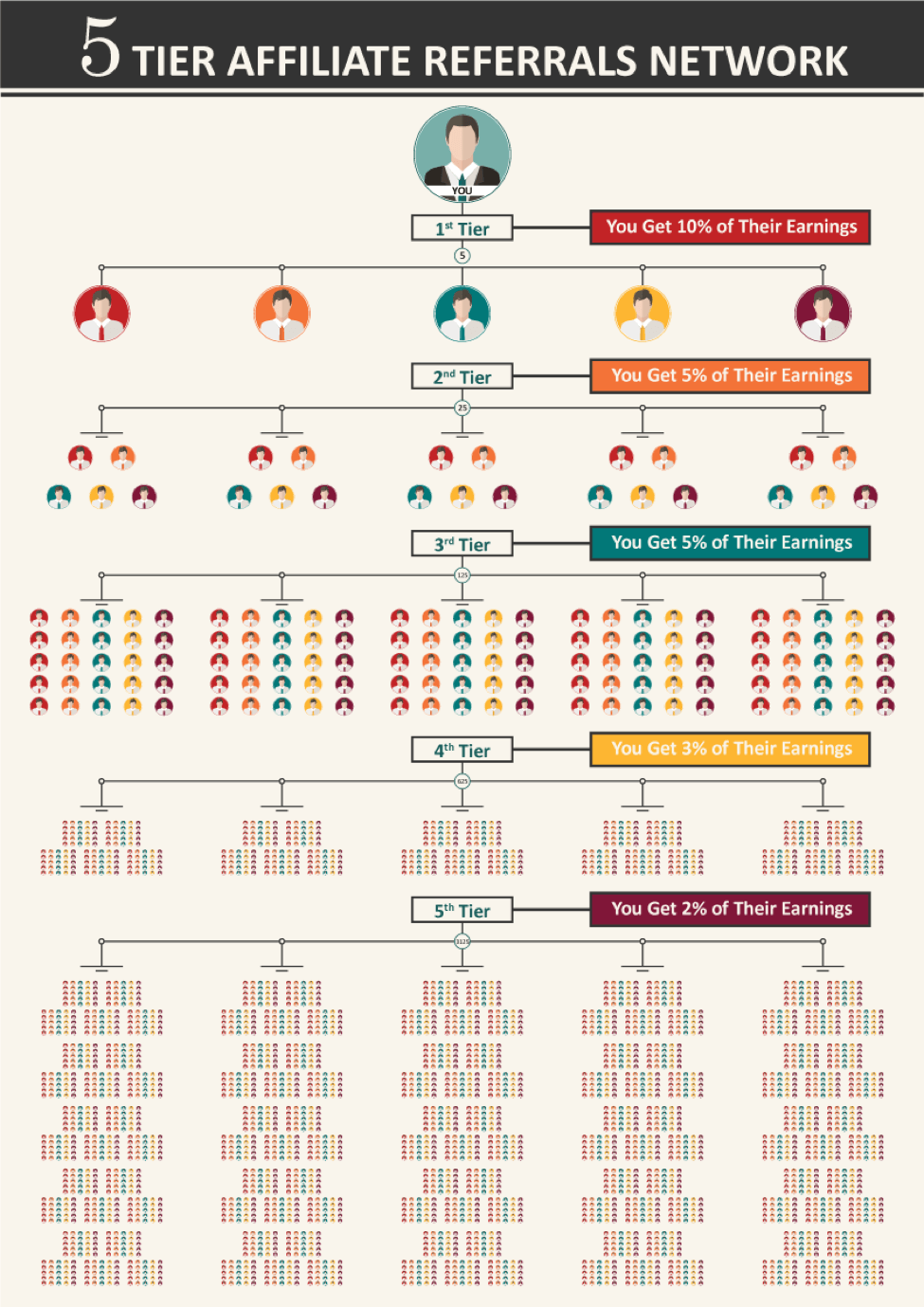
While this might sound good, you have to keep in mind that you’re essentially recruiting your competition. Combined with the fact that you’re typically making a percentage of their earnings, you’re getting a relatively small piece of the pie for each tier added.
Plus, there’s no guarantee that the affiliates you recruit will make any money. These programs can fall short if you emphasize too much recruitment and not enough sales.
Reading the fine print of these types of agreements can help you keep from getting your hopes too high, and can give you a better idea of their ultimate worth.
Different affiliates and merchants will want different pay structures. Depending on what you sell and who you’re selling it to, you could see any of these payment plans, proven wins, and payment systems when you take the leap into affiliate marketing.
It’s also worth noting that these programs bear a resemblance to MLMs and may not be legal in all countries. For best results, multi-tiered programs are best when restricted to two or three levels.
Choosing the ones that fit your needs the best is the first step you need to take in order to make money with affiliate marketing



2.2 Affiliate Marketing Average Income
Before you dive into affiliate marketing, you need to know if it will be profitable for you in the long run. That means learning how to track your return on investment or ROI.
One of the major questions about how to make money with affiliate marketing for beginners revolves around how much the affiliate marketing average income is. This is the ultimate measure of worth, and not without reason.
But if you’re looking for an easy answer, there’s unfortunately not one.
Becoming a profitable affiliate marketer is a tightrope walk, and is often a long-term endeavor. You need to be able to balance your costs against what you end up making, and that’s not always easy.
For example, if you’re running an ad campaign to sell a product, there are many considerations you’ll need to take into account.
First of all, running an ad costs money. When you run an ad, you’ll need to know your average cost-per-click, which means how much you pay when someone clicks on your ad. Here’s an example of some average costs-per-click:
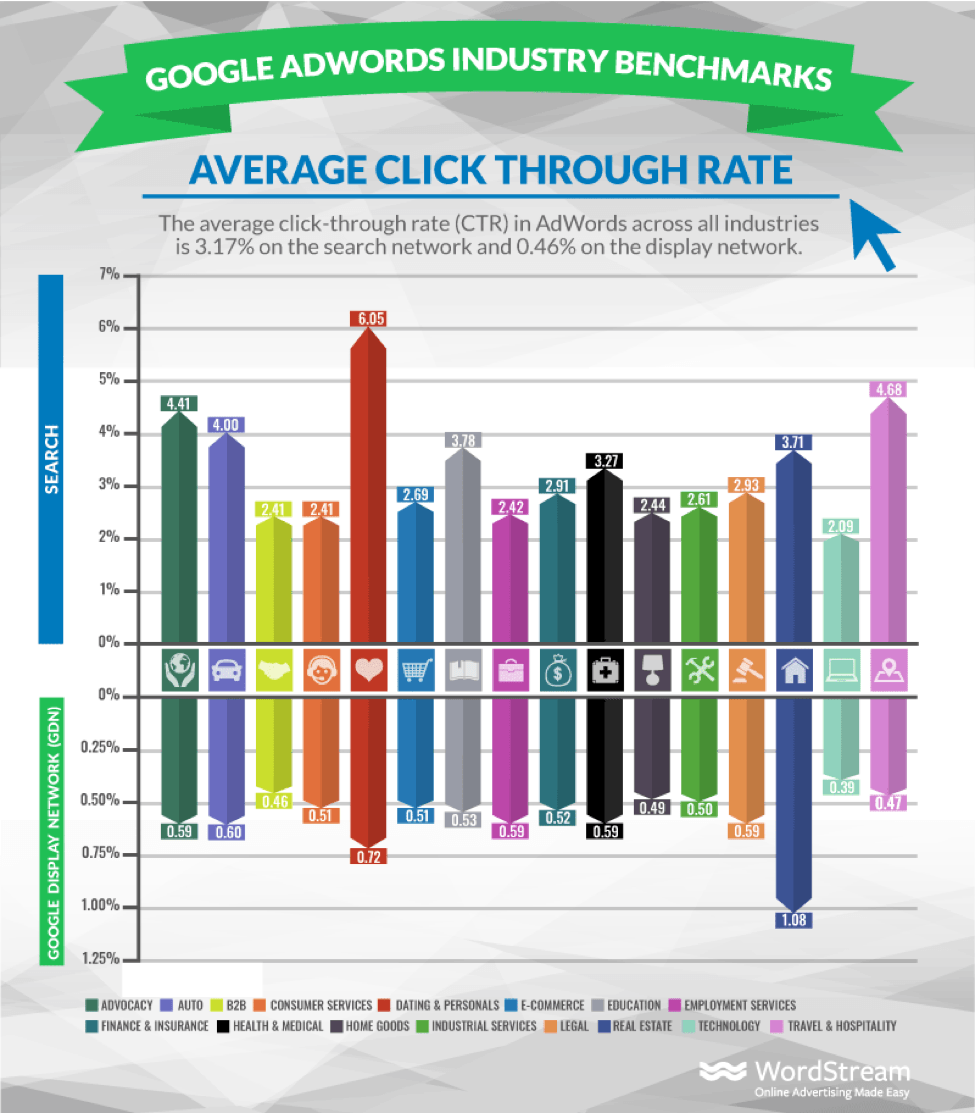
As you can see, cost-per-click varies from industry to industry.
So when you set up your advertising budget, you’ll need to take into account how many clicks you’re able to get with the money you put in.
If four or five clicks can max your budget, it may not be worth your time and money to run an ad. You can take another approach, or find another merchant to work with.
Then, you have to take into account how many clicks on average it takes for one of those clicks to complete the entire sales process. If you get an average of one sale per every 50 clicks, then you know how much it costs to get a sale. That figure is called your cost per customer.
For example, if it costs you $0.50 per click, and you need 50 clicks to get one sale, then your cost per customer is $25.
If what you make in commission is less than $25, then your affiliate marketing average income is in the red. It’s hard to make money with affiliate marketing when your costs are too high.
The key concept here is to find the right balance between cost per customer and the revenue you gain from winning a customer. You’ll need to experiment in order to find the best balance between your costs as a marketer and your income for proven wins.
For example, a recent study showed that most Facebook users only read the headlines of articles and ads before sharing with their network. That means focusing on headline experiments can help you.
You can also experiment with your ad copy, images, and the other elements of your ad to experiment and improve your own click-through rates.
Then after you’ve run an ad for a few days, you can see the average cost per click in your Ads dashboard:
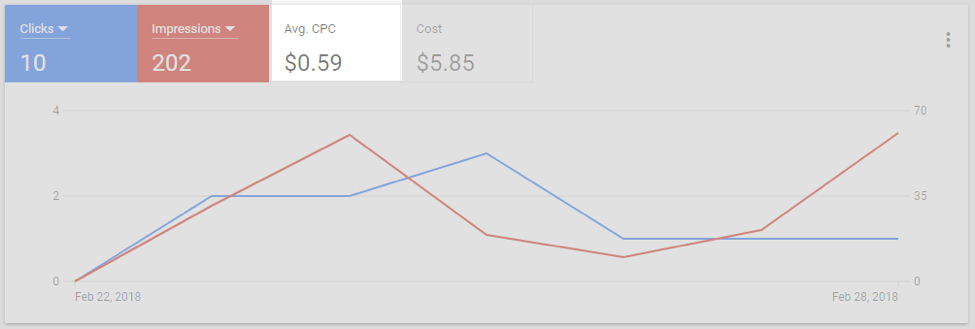
This will give you the figures you need to calculate whether or not running your ad is going to be profitable.
And this is just one example. If you go the blog-building route, you also have to keep in mind that building an audience takes time. While your costs are usually less, you still have to host your website and invest your time, which is no small investment.
From there, you also have the potential to run into the occasional drought.
One affiliate marketer saw a successful day that many only dream of – $6,000 in one day.
The next day’s haul? $0.
The truth is that there’s no such thing as an affiliate marketing average income because it’s going to be different for every affiliate marketer. Depending on your approach, budget, and goals, you’ll see different measures of success and failure as you proceed.
But when addressing how to make money with affiliate marketing for beginners, this is a valuable lesson. Don’t go with what’s trendy or what feels right. Go with something that’s proven to give you a positive return on your investment in the long run.
Figure out the specifics of how you get paid to be an affiliate marketer, and then make sure your path forward is a good one.
And to help you make sure that path forward is a good one, in the next chapter we’ll look at some of the specific actions you should take before you become an affiliate marketer.

